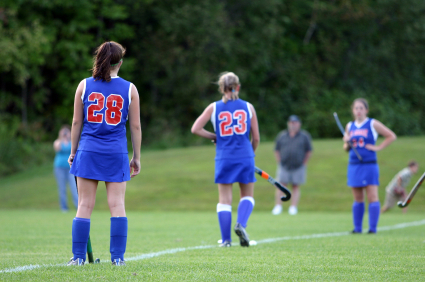Outmoded Model
The current public high school model - one first-year team, one junior varsity, one varsity per high school - might have made sense at the time it was adopted around 1924, when the number of roster spots was roughly equal to the number of those who wanted to play.
But, in my view, it makes no sense today, when the number of those who want to continue playing sports in middle school and high school far exceeds the finite number of spots available under such a system.
While there are two sides to the argument, I believe the practice is outmoded and needs to be reexamined in light of twenty-first century realities, an expanded population, and evidence that team sports participation is the most effective way to combat the rising tide of obesity among high school students.1
 Proponents of cutting often
argue that cutting is necessary to prepare children for an adult world
where there are winners and losers. They believe that children are
better off for having been cut because getting cut "toughens them up"
and exposes them to the disappointments all of us experience in
adulthood.
Proponents of cutting often
argue that cutting is necessary to prepare children for an adult world
where there are winners and losers. They believe that children are
better off for having been cut because getting cut "toughens them up"
and exposes them to the disappointments all of us experience in
adulthood.
They also argue with some justification that a child with a healthy self-image will not unduly suffer from being cut, and will simply find another sport or extracurricular activity in which they excel. Those who argue against a no-cut policy at the middle school and high school levels also argue that it would weaken the quality of the teams and cost too much money.
Traumatic for many
While it is true kids to learn the value of overcoming obstacles with hard work and how to grow through failure, the fact remains that being cut from a middle school or high school sports team is often one of the most upsetting and traumatic events in a teenager's life.
For many, being cut represents an assault on their self-esteem; they feel the pain and embarrassment of being rejected, and excluded from an activity in which they want to participate. In a cruel irony, the children who are cut, as the least skilled and the ones with the least self-confidence, are the very children who would benefit most from continued participation in an activity where they can learn such skills as a good work ethic and working cooperatively with a group towards a common goal.
In my view, childhood should prepare children for adulthood by giving them a chance to develop coping skills and the self-confidence needed to succeed in the adult world in a safe and nurturing environment. But perceived failure does not build self-esteem.








